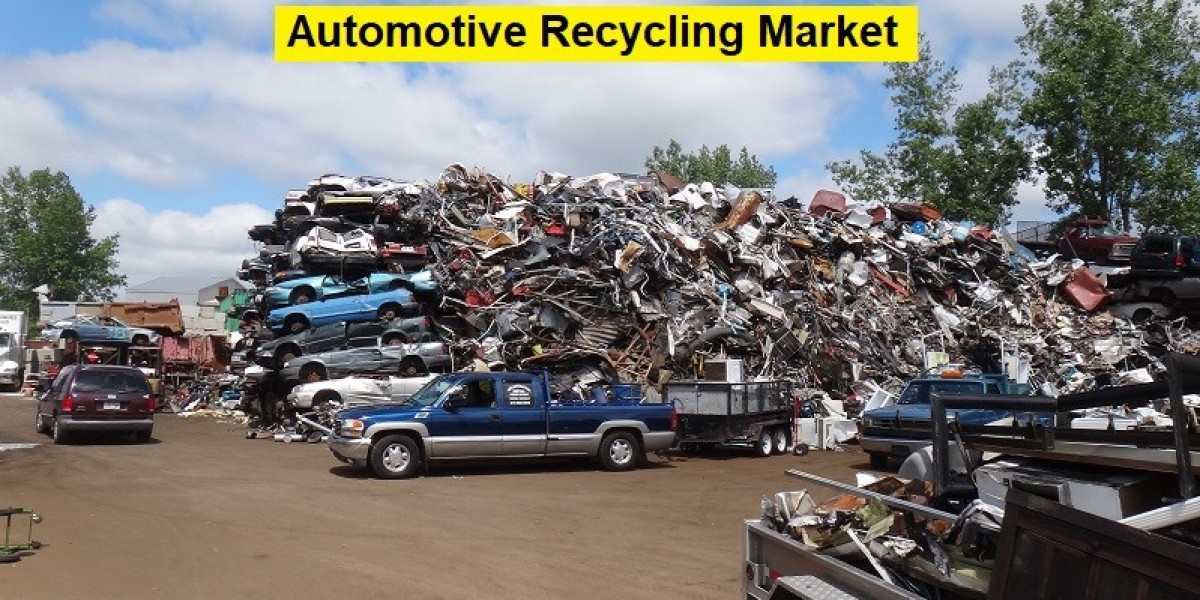The global Automotive Recycling Market size was valued at USD 106.77 Billion in 2023 and is forecasted to reach USD 184.47 Billion by 2030, growing at a CAGR of 7.19% from 2024 to 2030. The increasing awareness of sustainability and the growing pressure of rising fuel and raw material prices are driving this significant growth. Governments, businesses, and consumers alike are contributing to the demand for more sustainable practices, and automotive recycling is at the forefront of this change.
Automotive recycling involves the systematic dismantling and repurposing of end-of-life vehicles (ELVs). This eco-friendly process allows the recovery of valuable materials like metals, plastics, glass, and rubber. The goal is to minimize waste and prevent these materials from ending up in landfills. The process begins with the collection of ELVs from various sources, followed by de-pollution, disassembly, and material separation through advanced technologies such as shredding and magnetic separation. Once sorted, these materials are refined and reused in various industries, significantly supporting the circular economy.
According to the World Steel Association, around 65% to 75% of a typical vehicle consists of recyclable metals. Globally, automotive recycling efforts help reclaim about 14 million tons of recycled steel each year, enough to build 13.5 million new vehicles annually. This process also significantly contributes to energy savings, with recycling efforts in North America alone saving enough energy to power 18 million homes annually.
Download Full PDF Sample Copy of Research Report @ https://www.verifiedmarketresearch.com/download-sample/?rid=153047
Key Market Drivers and Trends
The Automotive Recycling Market is experiencing rapid growth due to several key factors:
Rising Metal Prices and Sustainability: The widespread adoption of recycled metals, especially steel, is driving market demand. Recycled steel is a key component in manufacturing lightweight, fuel-efficient vehicles, further supported by the automotive industry's shift towards sustainability.
Technological Advancements: Innovations in recycling technologies, including efficient dismantling, material separation, and processing, are enhancing the recovery of valuable components from vehicles. These technologies minimize environmental impact while maximizing the reuse of materials.
Growth in Electric Vehicles (EVs): The increasing adoption of EVs is propelling the demand for recycling lithium-ion batteries and other high-tech vehicle components. The Edison Electric Institute (EEI) estimates that by 2030, there will be 26.4 million electric vehicles on the road in the USA alone, further boosting the recycling market.
Segmentation of the Automotive Recycling Market
The Global Automotive Recycling Market is segmented by Type, Material, End-Use, and Geography.
By Type
- Passenger Vehicle Recycling: Dominates the market due to the high volume of ELVs and the demand for recycled auto parts.
- Commercial Vehicle Recycling: Contributes significantly, especially in the form of heavy-duty vehicle parts and scrap metal.
By Material
- Metal: Accounts for the largest share, with ferrous metals like steel and iron leading the recycling efforts. Non-ferrous metals, including aluminum and copper, are also highly valuable.
- Polymer and Others: Polymer recycling is growing due to the increased use of plastics in modern vehicles. However, challenges like recycling carbon-fiber reinforced plastics (CFRP) need to be addressed.
By End-Use
- New Products Manufacturer: Recycled metals and parts are utilized in the production of new vehicles and various other industries.
- Reusable Parts: Components like engines, transmissions, and batteries are refurbished for resale, contributing to a sustainable supply chain.
Regional Market Insights
- North America holds the largest market share, with strong recycling initiatives and advanced technologies. The presence of major automotive recycling companies and stringent environmental regulations also bolster market growth.
- Europe is another key player, driven by strict sustainability regulations and a robust automotive industry.
- Asia-Pacific is experiencing rapid growth, particularly in countries like China and India, where rising industrialization and urbanization are contributing to increased recycling activities.
Competitive Landscape
The Global Automotive Recycling Market is highly competitive, with key players such as Toyota, LKQ Corporation, Sims Limited, and Schnitzer Steel Industries leading the industry. These companies are focusing on expanding their recycling capacities and investing in advanced technologies to improve material recovery rates.
To Purchase a Comprehensive Report Analysis @ https://www.verifiedmarketresearch.com/select-licence/?rid=153047
Future Outlook
The Automotive Recycling Market is expected to witness significant growth in the coming years, driven by the increasing number of ELVs, rising consumer awareness, stringent environmental regulations, and the scarcity of raw materials. With innovations in recycling technologies and the growing importance of sustainability, the market offers immense opportunities for players in the automotive and recycling industries.
In conclusion, the Automotive Recycling Market plays a crucial role in promoting a sustainable future by reducing waste, conserving resources, and supporting the circular economy. As the industry continues to evolve, driven by technological advancements and regulatory support, it will remain a key player in global sustainability efforts.



